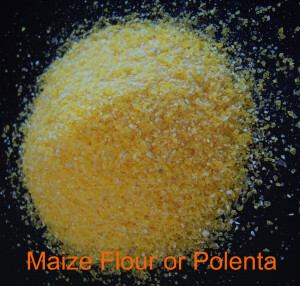In our cookbooks we teach you how to make two different flour blends from which all the recipes can then be made. That's right you only need two different flour mixes/blends in your store cupboard if using our cookbooks or recipes!
There is one blend used for both baking and pasta and another blend specifically for breads. In total the blends use a combination of 5 different flours - Rice (2 types), Buckwheat, Tapioca & Corn (which can be substituted for Sorghum). All are common, inexpensive gluten free flours that should be easy for you to find. Below is a guide to help you identify the correct flours as frustratingly many different names can be used to describe the same exact flour.
We have attempted to keep our flour explanations here as simple as possible but if you have any questions you would like to ask of us directly feel free to email us on: enquiries@goodnessme.co.nz
Where to buy Gluten Free Flours: we suggest you try your local bulk bin store (Bin Inn), supermarkets (sometimes the flours are also found in the international foods section), health food or whole food stores, Asian and Indian food stores. In NZ these two online shops also sell the gluten free flours we use: www.onestopglutenfreeshop.co.nz and www.glutenfreestore.co.nz
Fine Maize Flour for Baking and Pasta:
A whole grain yellow flour made from corn or maize that can also be called Fine Polenta, Corn Meal etc. It should be very finely ground, the finer the better as you don’t want to have a “gritty” texture to your baking. If you can feel it through the bag it should have no "grit" in it when rubbed between your fingers.

Maize Flour or Polenta for Bread:
A whole grain yellow flour made from corn or maize that is medium ground. Can also be called Polenta, Corn Grits, Corn Meal etc. and the coarser grain gives a lovely texture to bread. If you wish you can just use the fine maize flour from the Baking Blend in your Bread Blend if you prefer to only buy one sort. (Don’t use Masa flour which is treated with lime).
This is not used in our blends as it is high in starch and natural sugars so is not healthy in large quantities. Often also called Corn Starch, Maizena or Maize Starch it's a refined, processed white flour made by extracting the starch from maize or corn. Corn starch is a popular ingredient used in thickening sauces or soups, and is used in making corn syrup and other sugars. We do use it very occasionally in our cookbook, and in very small quantities such as when thickening the filling for Lemon Meringue Pie.
Did you know heated corn starch raises you blood glucose levels even faster than sugar! Another reason to use it sparingly.
To help explain the differences between yellow and white maize/corn flours further we asked a New Zealand based manufacturer of maize & corn products - Corson Grains: "Briefly (yellow) maize flour and (white) cornflour (excluding wheaten cornflour which is made from wheat from the discussion) are different products. They are both manufactured from maize or corn but by two different processes. Our yellow maize flour is “dry-milled” in a similar way to normal wheat flour used in bread making. It contains both starch and non-gluten proteins from the maize kernel/grain endosperm. Our cornflour is “wet milled” and contains basically 100% maize starch (no protein) from the maize kernel/grain".

Fine Rice Flour for Baking and Pasta: A very powdery fine rice flour with a texture similar to talcum powder (no grit when rubbed between your fingers), this flour has a higher gelatinization* point than medium ground rice flour. This fine rice flour is often found in Asian food stores (see example picture). If you can't find fine rice flour then Glutinous (meaning "sticky" not gluten filled) or Sweet Rice flour can be used. However you may need to add a little more liquid than the recipe calls for, especially the pasta dough recipe if using glutinous rice flour. So the fine rice flour is by far the best to use in the blend and worth the extra effort to find.
This is a coarser rice flour where you can feel the particles/grit when rubbed between your fingers. This flour has a lower gelatinization* point than fine rice flour. This flour should only be used for bread as if used in baking it can result in a "gritty" texture in your baked goods. Either white or brown rice flour can be used in bread baking it's up to you which you prefer.
*Starch Gelatinization: As the starch is heated, the molecular chains unravel, allowing them to collide with other starch chains to form a mesh, thickening the liquid.
Despite its name, buckwheat is not related to wheat, it is in fact related to rhubarb and sorrel and it is the seeds of the plant that are ground to make buckwheat flour. The seeds have a characteristic pyramid shape. We have discovered that it can be easier (and often cheaper) to buy whole buckwheat seeds and grind into flour at home. This can be done in an inexpensive coffee bean/spice grinder and takes only a few seconds to have your own freshly milled buckwheat flour, which tastes amazing.
A starch extracted from manioc that can also be called cassava. Sometimes arrowroot is also made from tapioca but not always. Due to its high starch content it is great for thickening sauces and does so at a lower temperature than corn starch. Like other pure starches tapioca is almost pure carbohydrate and so provides useful cohesion properties, specifically in gluten free bread baking.





